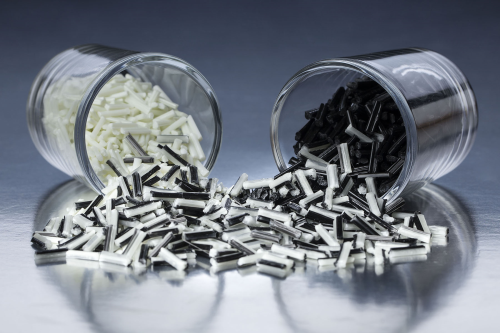
PlastiComp says that the new products expand the performance range of long fibre material options available to product designers while offering a cost effective avenue to adopt the high performance capabilities of carbon fibre.
“PlastiComp’s new hybrid long glass+carbon fibre reinforced products really hit a sweet spot that nicely bridge the performance gap between using either of these fibres by themselves,” says Eric Wollan, business development manager at PlastiComp. “The carbon fibre significantly boosts strength and stiffness while the glass fibre allows the toughness that many choose LFT materials for to be retained. Strength and toughness are key long fibre attributes that can’t be achieved in unison with other reinforcement methods.”
A polyamide 6/6 hybrid 40% long glass+carbon fibre reinforced composite with 20% carbon fibre and 20% glass fibre has a tensile strength of 41,200 psi (284 MPa), which is 96% that of an equivalently loaded long carbon fibre material and 24% higher than a similar long glass fibre material. It possesses a flexural modulus of 2,600 ksi (17,931 MPa), which is 87% that of carbon and 86% higher than glass. The inclusion of long glass fibre allows the material to retain 78% of the un-notched impact capability of glass at 18.8 ft•lb/in (1,004 J/m), which is a 25% improvement over carbon alone.
“There is an interesting synergy taking place in these hybrid long glass+carbon fiber composites,” says Wollan. “We can cut the amount of carbon fibre used in half and still keep 85-95% of the strength and stiffness, plus the addition of glass fibre is bumping up the durability by up to 25%. That performance combination really makes these products attractive, because they land right where a lot of people need to be to use LFT composites as substitutes for metals.”
“Although long carbon fibre reinforced composites are the pinnacle of thermoplastic performance, economically their use can’t be justified in a lot of applications,” says Wollan. “Now, with these new hybrid long glass+carbon fibre composites, PlastiComp has a stepping stone material in the middle of the glass fibre to carbon fibre gap that can be 20-50% less expensive with hardly any performance hit.”




